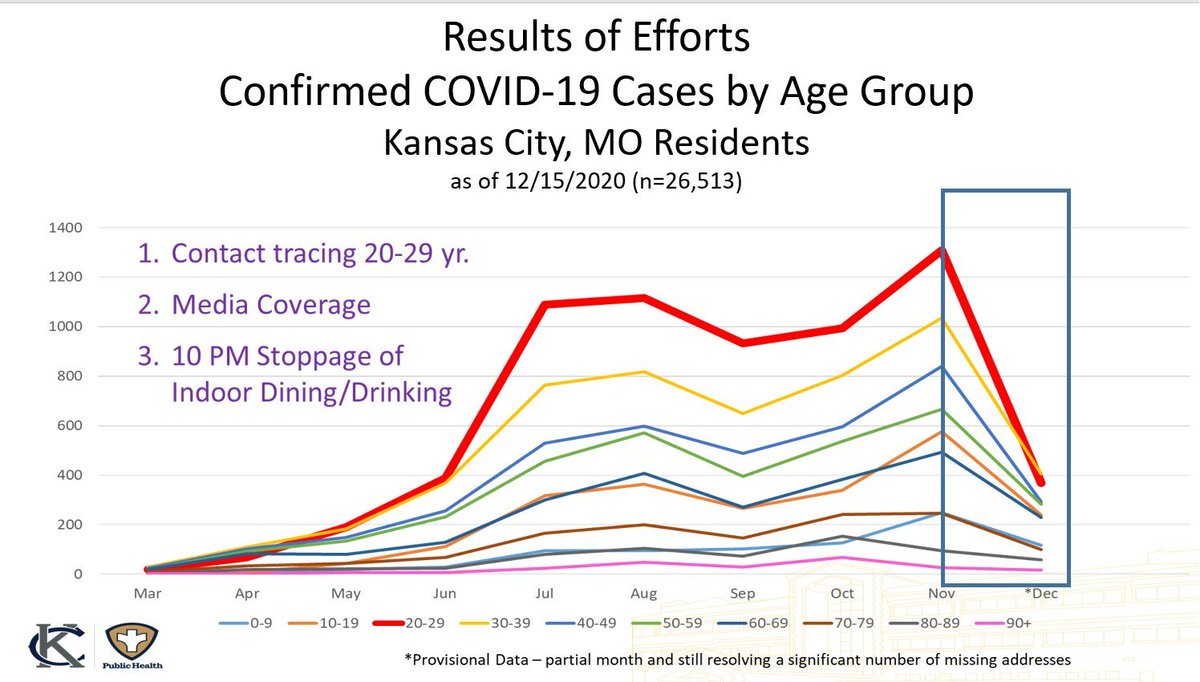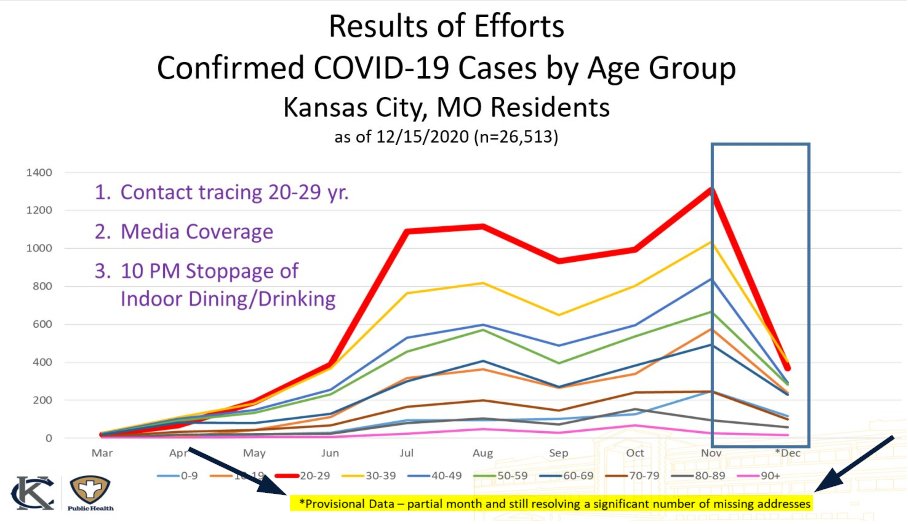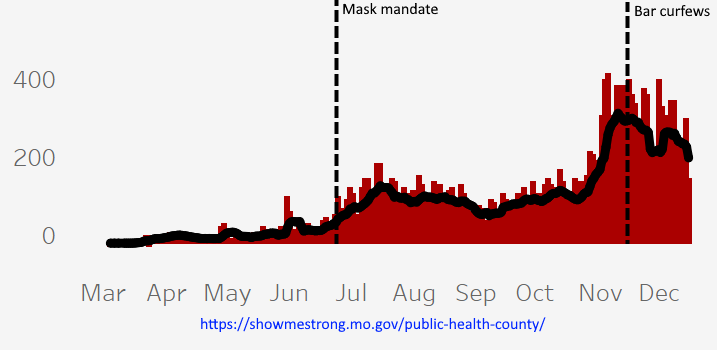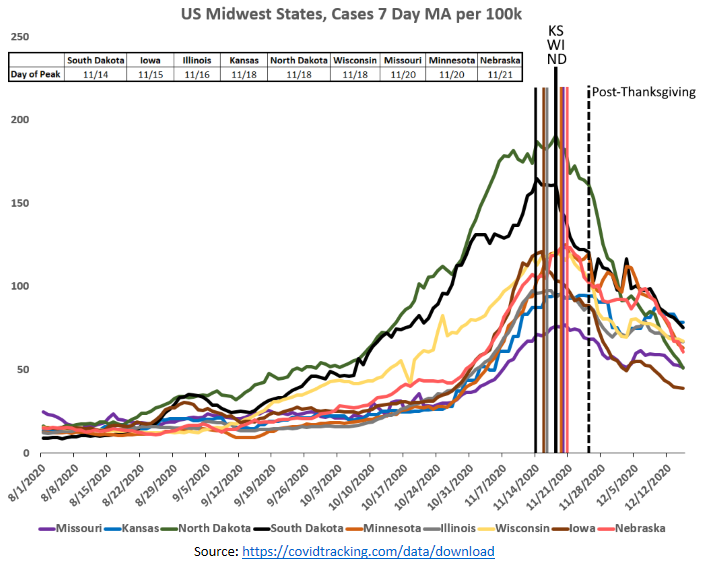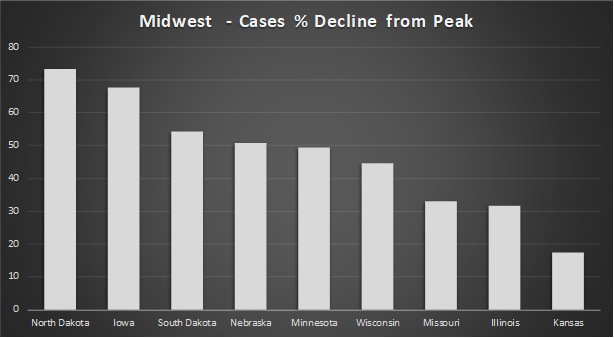
Tired of seeing the same flawed #COVID19 Kansas mask study being shared as proof of "masks working", so I used similar methods + the same dataset and tracked what happened in mandate/non-mandate counties after their study's end date. Pretty different from what the CDC found. 
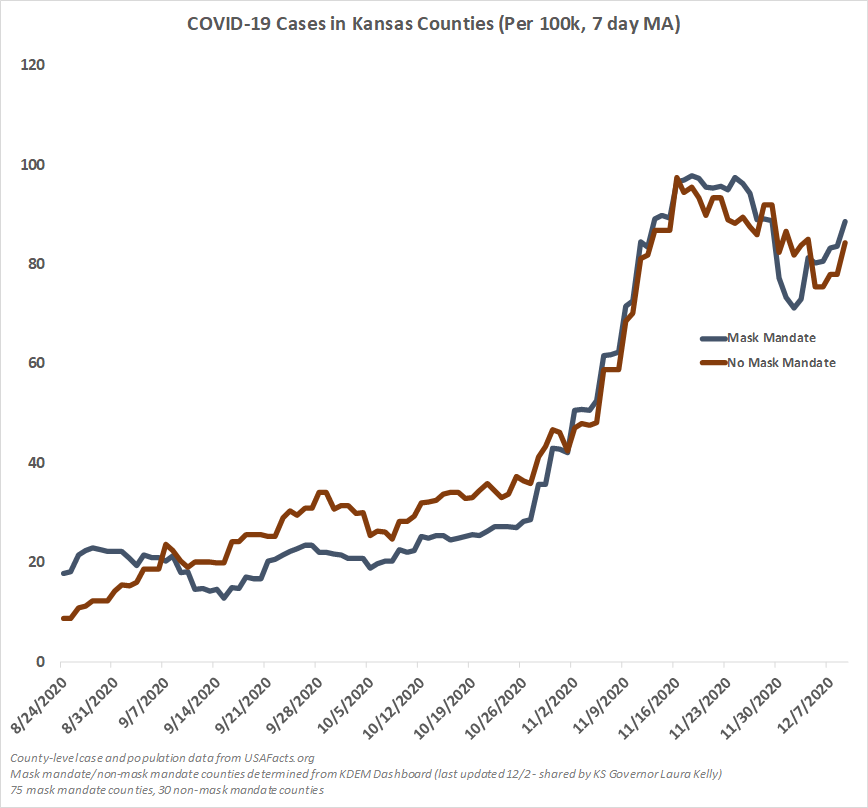
The original observation in the study shared widely by the CDC was that daily cases in mask mandated counties fell while non-mask mandated counties rose. Of course, the conclusion falls apart when you re-run their experiment when SARS-CoV-2 was much more prevalent in Kansas. 
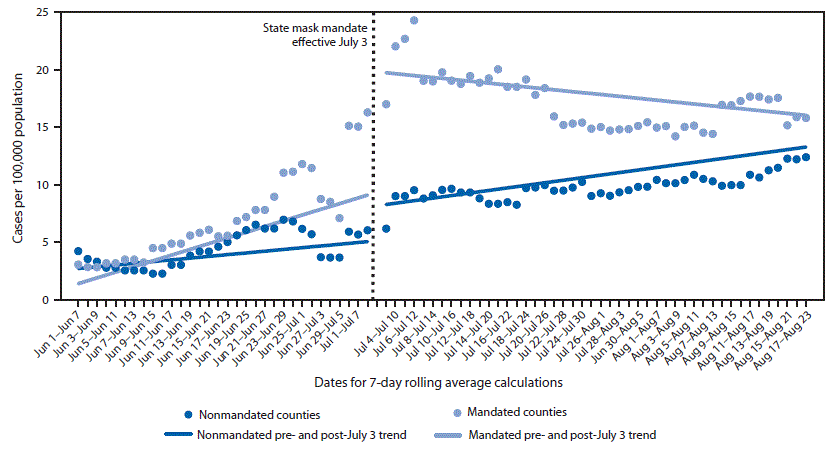
Cases rose, peaked, and fell at the exact same time. Sure, the non-mask mandate counties were higher prior to the peak, but this graph does not account for counties' testing levels, and when case prevalence is so low (basically a baseline) there is a lot of room for noise. 
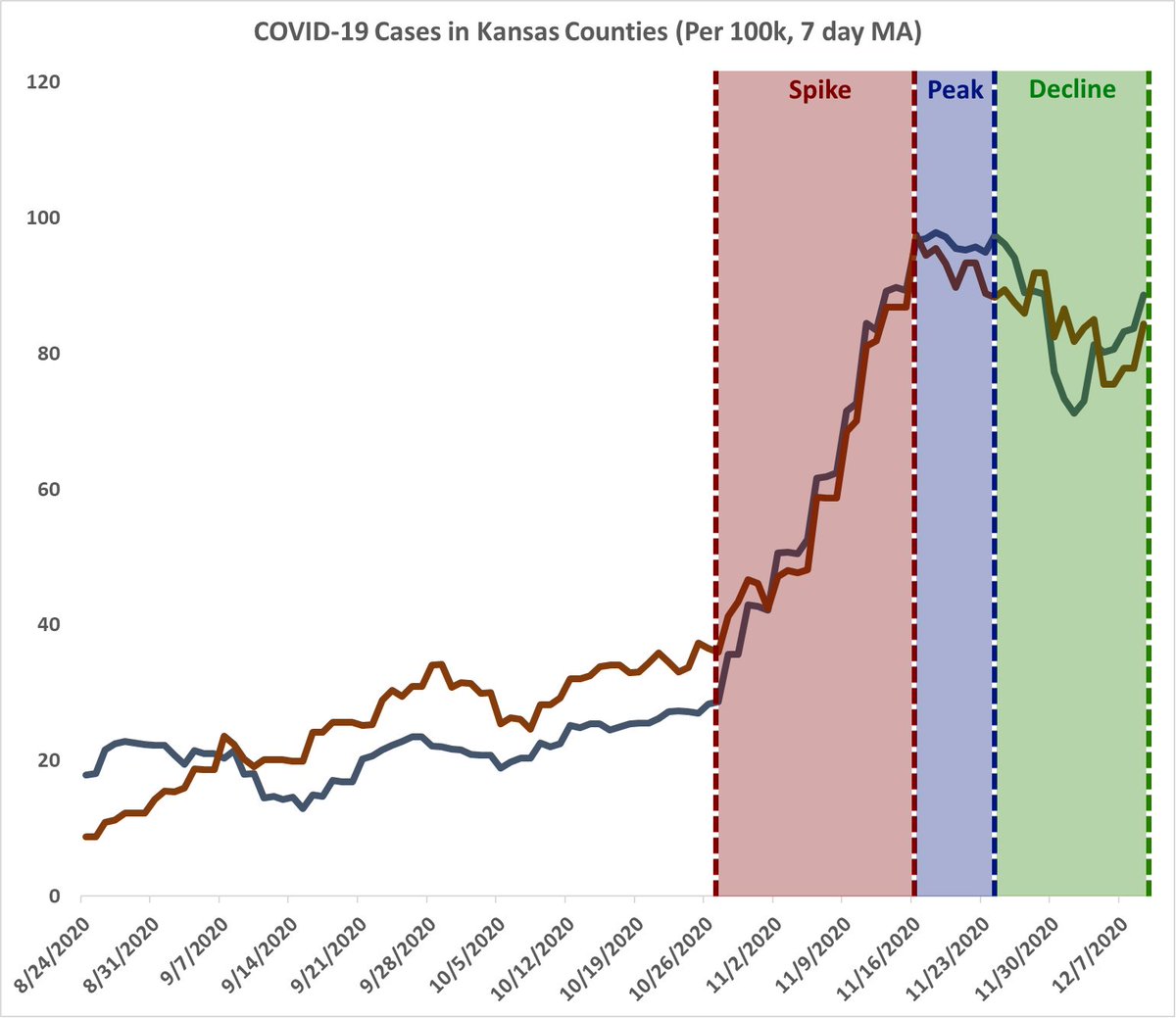
Additionaly, there are other concerns with the methodology/reasoning behind the start/end dates in the original CDC study, a few of which @ianmSC outlines here.
https://twitter.com/ianmSC/status/1332407421151576064?s=20
Of course, the population is higher in the mask mandate group than the non-mask mandate group - yet when I narrow down the non-mask mandate counties to counties with populations over 20k, you get the same result. Sure, the peak is slightly lower for non-mandate counties, but… 
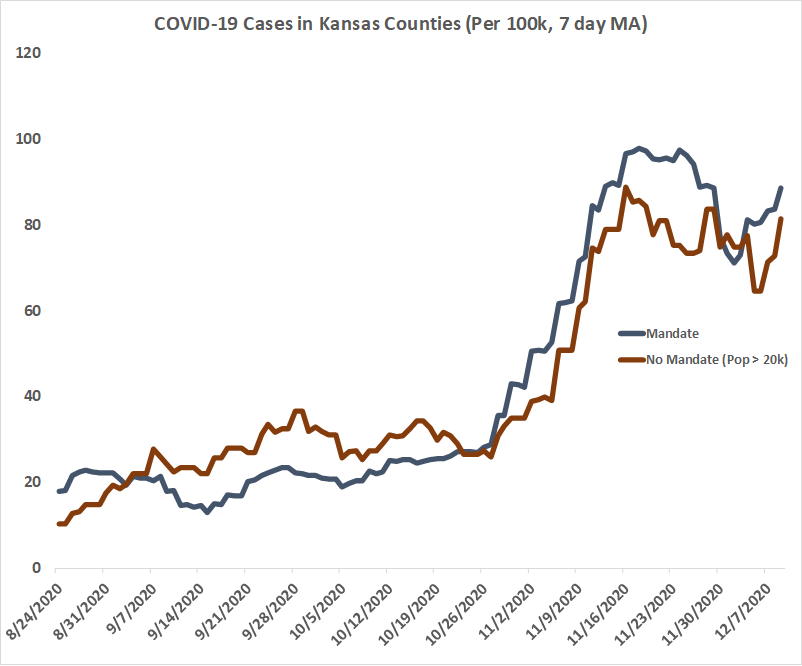
I won't say those counties did "better" at peak for the same reason I won't say they did "worse" prior to the November spike. There are other things that would need to be accounted for. What the takeaway should be is the *trend* - both rose/peaked/declined at the same time.
When the scientific evidence (read: RCT studies) pre-COVID hysteria overwhelmingly said universal masking was not effective in stopping respiratory viruses…should we really be surprised if it's the same story for *this* respiratory virus? 

As Dr. Joseph Ladapo says in his WSJ piece, the mask obsession is a damaging distraction from the pandemic reality - viruses spread, and scientists' insane effort to prove masks work takes up valuable time that could be used on far more important issues. wsj.com/articles/masks…
• • •
Missing some Tweet in this thread? You can try to
force a refresh





